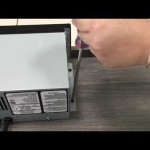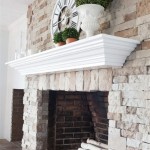Hutch Fireplace Insert Parts: A Comprehensive Guide
Hutch fireplace inserts offer an efficient and aesthetically pleasing way to upgrade an existing fireplace. Understanding the various components that comprise a Hutch fireplace insert is critical for maintenance, repairs, and optimizing performance. This article provides a detailed overview of Hutch fireplace insert parts, focusing on their function, common issues, and considerations for replacement.
Understanding the Core Components
The performance and longevity of a Hutch fireplace insert depend on the seamless functionality of its core components. These parts work in unison to ensure efficient combustion, heat distribution, and safe operation. Neglecting any element can compromise the entire system, leading to suboptimal performance and potential hazards.
Firebox: The firebox is the heart of the insert, the insulated chamber where combustion occurs. Hutch fireboxes are typically constructed from heavy-gauge steel or cast iron, materials chosen for their ability to withstand extreme temperatures and thermal stress. The design of the firebox also plays a vital role in combustion efficiency, promoting complete burning of fuel and minimizing emissions.
Glass Door Assembly: The glass door assembly serves multiple purposes. It provides a visual window into the fire, allowing homeowners to enjoy the ambiance while containing sparks and embers. The glass itself must be tempered and designed to withstand high temperatures. The door assembly also typically includes an air wash system, which directs a flow of air across the inside surface of the glass to keep it clean and free of soot buildup.
Blower System: The blower system is responsible for circulating heated air from the firebox into the room. It typically consists of a fan or blower motor, a housing, and associated wiring. Blowers significantly enhance the heating efficiency of the insert by distributing heat more evenly and quickly than natural convection alone.
Venting System: The venting system is crucial for safely exhausting combustion byproducts, such as smoke and carbon monoxide, outside the home. Hutch fireplace inserts typically require a specific type of venting system, often a stainless steel liner that runs up through the existing chimney. Proper venting is essential for preventing dangerous buildup of toxic gases within the living space.
Control System: The control system regulates the operation of the insert, typically including a thermostat, switches, and wiring. Some models may incorporate more sophisticated electronic controls that allow for precise temperature settings and automated operation. The control system ensures safe and efficient operation of all the insert's functions.
Examining Key Components in Detail: Function and Potential Issues
Each individual component plays a specific role in the overall operation of the Hutch fireplace insert. Understanding the function and potential failure points of these parts allows for proactive maintenance and timely repairs, preventing small issues from becoming larger, more costly problems.
Firebox Liners: Firebox liners protect the firebox walls from direct heat exposure. They are typically made from refractory brick, ceramic fiber board, or cast iron. Over time, these liners can crack, crumble, or warp due to repeated heating and cooling cycles. Damaged liners reduce the firebox's insulation capabilities and can eventually lead to damage to the firebox itself. Regular inspection and replacement of worn liners are essential.
Glass Door Gasket: The glass door gasket creates an airtight seal between the glass door and the firebox. This seal is crucial for maintaining proper combustion and preventing smoke leakage into the room. Over time, the gasket can become brittle, cracked, or compressed, compromising its sealing ability. A leaking gasket can reduce heating efficiency and increase the risk of carbon monoxide poisoning. Replacement of the gasket is a relatively simple task but should be performed carefully to ensure a proper seal.
Blower Motor: The blower motor is subject to wear and tear due to constant use. Common issues include bearing failure, overheating, and wiring problems. A failing blower motor may produce unusual noises, such as squealing or grinding, or it may simply stop working altogether. In some cases, the motor can be lubricated or repaired, but replacement is often the most reliable solution.
Thermocouple: The thermocouple is a safety device that monitors the pilot light or flame. If the pilot light goes out, the thermocouple shuts off the gas supply to prevent a dangerous buildup of gas. A faulty thermocouple can cause the pilot light to repeatedly extinguish or prevent the insert from lighting at all. Replacement of the thermocouple is a straightforward repair that can often be performed by a homeowner with basic mechanical skills.
Gas Valve: The gas valve controls the flow of gas to the burner. It is a critical component for safe and efficient operation. A malfunctioning gas valve can cause a variety of problems, including gas leaks, inconsistent flame, or complete failure to ignite. Gas valve repairs should only be performed by a qualified technician due to the inherent safety risks associated with gas appliances.
Igniter: The igniter, whether a spark igniter or a glow plug, initiates the combustion process. Over time, igniters can fail due to wear, corrosion, or electrical problems. A faulty igniter will prevent the fireplace insert from lighting. Replacement of the igniter is typically a simple process, but it is essential to ensure that the replacement igniter is compatible with the specific model of fireplace insert.
Air Control Damper: The air control damper regulates the amount of air entering the firebox, which affects the intensity and efficiency of the fire. A malfunctioning damper can cause the fire to burn too hot or too cold, leading to inefficient heating and excessive smoke production. The damper mechanism can become stuck or corroded, preventing it from operating smoothly. Lubrication or replacement of the damper may be necessary.
Considerations for Fireplace Insert Part Replacement
When faced with the need to replace a part in a Hutch fireplace insert, several factors should be considered to ensure a successful and safe repair. Selecting the correct replacement part and following proper installation procedures are critical for maintaining the insert's performance and safety.
Part Compatibility: It is imperative to use replacement parts that are specifically designed for the model of Hutch fireplace insert in question. Using generic or incompatible parts can lead to poor performance, damage to the insert, and potentially hazardous conditions. Refer to the manufacturer's documentation or consult with a qualified technician to identify the correct replacement parts.
Safety Precautions: Before performing any repairs or replacements on a fireplace insert, always disconnect the power supply or gas supply to prevent electrical shock or gas leaks. Allow the insert to cool completely before handling any components. Wear appropriate personal protective equipment, such as gloves and safety glasses, to protect against injury.
Proper Installation: Follow the manufacturer's instructions carefully when installing replacement parts. Ensure that all connections are secure and that all components are properly aligned. If unsure about any aspect of the installation process, consult with a qualified technician. Improper installation can lead to functional problems, safety hazards, and voiding of the manufacturer's warranty.
Professional Assistance: For complex repairs or replacements involving gas lines, electrical wiring, or critical safety components, it is always advisable to seek the assistance of a qualified technician. Attempting to repair these components without the necessary knowledge and experience can be dangerous and potentially illegal. A qualified technician can diagnose the problem accurately, perform the repair safely and effectively, and ensure that the insert is operating properly.
Regular Maintenance: Prevent major repairs by maintaining the Hutch fireplace insert regularly. Schedule annual inspections and cleaning by a qualified technician. Clean the glass door regularly to remove soot buildup. Inspect the venting system for blockages or damage. By addressing minor issues proactively, homeowners can extend the life of the insert and minimize the need for costly repairs.
Warranty Considerations: Keep records of all maintenance and repairs performed on the fireplace insert. Consult the manufacturer's warranty documentation to determine if the replacement part is covered under warranty. Using non-authorized parts or improper installation can void the warranty. Adhering to the manufacturer's recommendations for maintenance and repairs will help to preserve the warranty coverage.
Understanding the individual components of a Hutch fireplace insert and the considerations for their replacement allows for informed decision-making regarding maintenance, repairs, and overall system performance. Prioritizing safety and following proper installation procedures are paramount for ensuring the safe and efficient operation of the fireplace insert.

Hutch Ceramic Fireplace Insert Glass High Temp Replacement

Hutch Fireplace Insert Replacement Ceramic Wood Stove Glass

Hutch Ceramic Fireplace Insert Glass High Temp Replacement

Replacement Stove Parts

Replacement Stove Parts

Hutch Wood Stoves Well Crafted Replacement Glass Now

Buck Stove Parts
Anyone Else Own A Hutch Rebel Fireplace Insert Hearth Com Forums Home
Hutch Rebel Hearth Com Forums Home

Ez Insert Stove Parts
Related Posts








